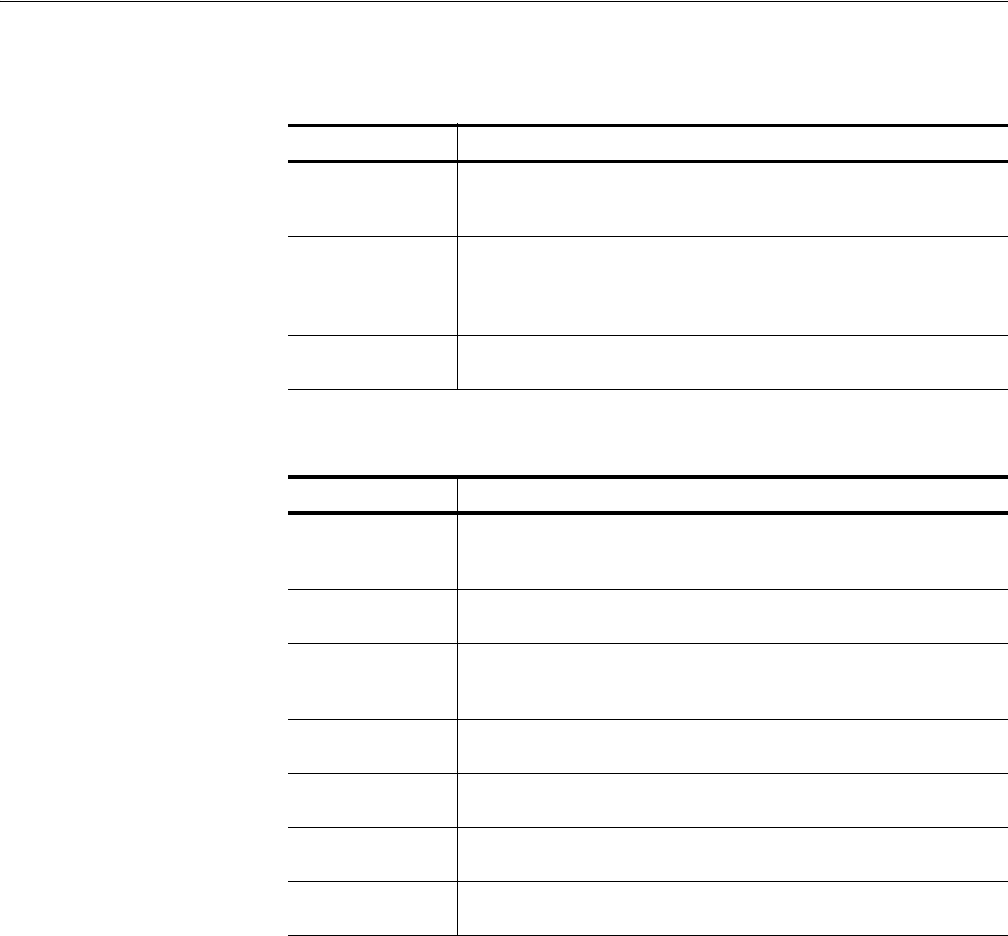User's Manual
Table Of Contents
- Title page
- Table of Contents
- General Safety Summary
- Preface
- Getting Started
- Operating Basics
- Reference
- Reference
- Menu Structures
- The Setup Menu Screen
- The Graphical Waveform Editor
- The Pattern Editor
- Quick Editing
- The Table Editor
- The Equation Editor
- The Sequence Editor
- The APPL Menu
- The UTILITY Window
- External Keyboards
- Setting General Purpose Knob Direction
- Formatting a Floppy Disk
- Displaying Disk Usage
- Screen Display Enable/Disable
- Focused Color
- Displaying Instrument Status
- Internal Clock (Date and Time)
- Resetting the Instrument
- Connecting to a GPIB Network
- Ethernet Networking
- Hardcopy
- Calibration and Diagnostics
- Upgrading the System Software
- Capturing Waveforms
- Waveform Programming Language
- Command Descriptions
- Programming Examples
- File Conversion
- File Management
- FG Mode
- Waveform Mixing Mode
- Synchronous Operation Mode (AWG710B only)
- Appendices
- Appendix A: Specifications (AWG710B)
- Appendix A: Specifications (AWG710)
- Appendix B: Performance Verification (AWG710B)
- Conventions
- Self Tests
- Performance Tests
- Operating Mode Tests
- Amplitude and Offset Accuracy Tests (Normal Out), (except option 02)
- Amplitude, Offset Accuracy and Rise Time Tests (Direct DA Out), (except option 02)
- Amplitude, Offset Accuracy and Rise Time Tests (for option 02)
- Pulse Response Tests (Normal Out), (except option 02)
- Trigger Input Tests
- Event Input and Enhanced Mode Tests
- External Clock Input and VCO Out Output Tests
- VCO OUT Output Frequency and 10 MHz Reference Input Tests
- Marker Output Tests
- Synchronous Operation Tests
- Appendix B: Performance Verification (AWG710)
- Conventions
- Self Tests
- Performance Tests
- Operating Mode Tests
- Amplitude and Offset Accuracy Tests (Normal Out), (except option 02)
- Amplitude, Offset Accuracy and Rise Time Tests (Direct DA Out), (except option 02)
- Amplitude, Offset Accuracy and Rise Time Tests (for option 02)
- Pulse Response Tests (Normal Out), (except option 02)
- Trigger Input Tests
- Event Input and Enhanced Mode Tests
- 1/4 Clock Frequency and 10 MHz Reference Input Tests
- Marker Output Tests
- Appendix C: Inspection and Cleaning
- Appendix D: Sample Waveforms
- Appendix E: File Transfer Interface Outline
- Appendix F: Miscellaneous
- Appendix G: Sequence File Text Format
- Index

The Equation Editor
AWG710&AWG710B Arbitrary Waveform Generator User Manual 3-111
Using the Equation Editor
The text display area and character palette are shown on the display. Input
characters or strings (such as keywords) using bottom buttons. Use the general
purpose knob and the a, ', b, and y buttons to input characters.
Character pallet Used with the general purpose control knob to enter alphanumeric
characters into the edit window. To enter a character at the caret position,
highlight a character and push the ENTER button.
Text edit window Area where you enter text and/or equation information. The maximum
length of a line is 256 characters, including spaces. You can concatenate
lines by entering a colon character (:) at the end of a line. THe maximum
number of characters you can concatenate is 1000.
Caret A vertical bar that indicates the position in the file where edit operations
take place. Use the front–panel or keyboard arrow keys to move the caret.
Table 3-30: Equation editor bottom menu
Button Description
File Provides side–menu commands for closing the editor, saving text to the
current file or a new file, and compiling an equation file into a waveform file.
Refer to page 2-17 for information on relevant file management tasks.
Edit Provides side–menu commands for text edit functions to cut, copy, paste,
select, and insert text.
Basic Keywords Provides a pop–up menu of WPL basic keywords. The keywords are
described in the Waveform Programming Language section beginning on
page 3-185.
Waveform Functions Provides a pop–up menu of WPL waveform operation keywords. The
keywords are described in the Waveform Programming Language section.
Math Functions Provides a pop–up menu of WPL math operation keywords. The keywords
are described in the Waveform Programming Language section.
More Math Functions Provides a pop–up menu of more WPL math operation keywords. The
keywords are described in the Waveform Programming Language section.
Undo! Reverses a character or string cut or paste operation to the previous state.
This is a one–level undo function.
Table 3-29: Equation editor screen elements
Element Description










